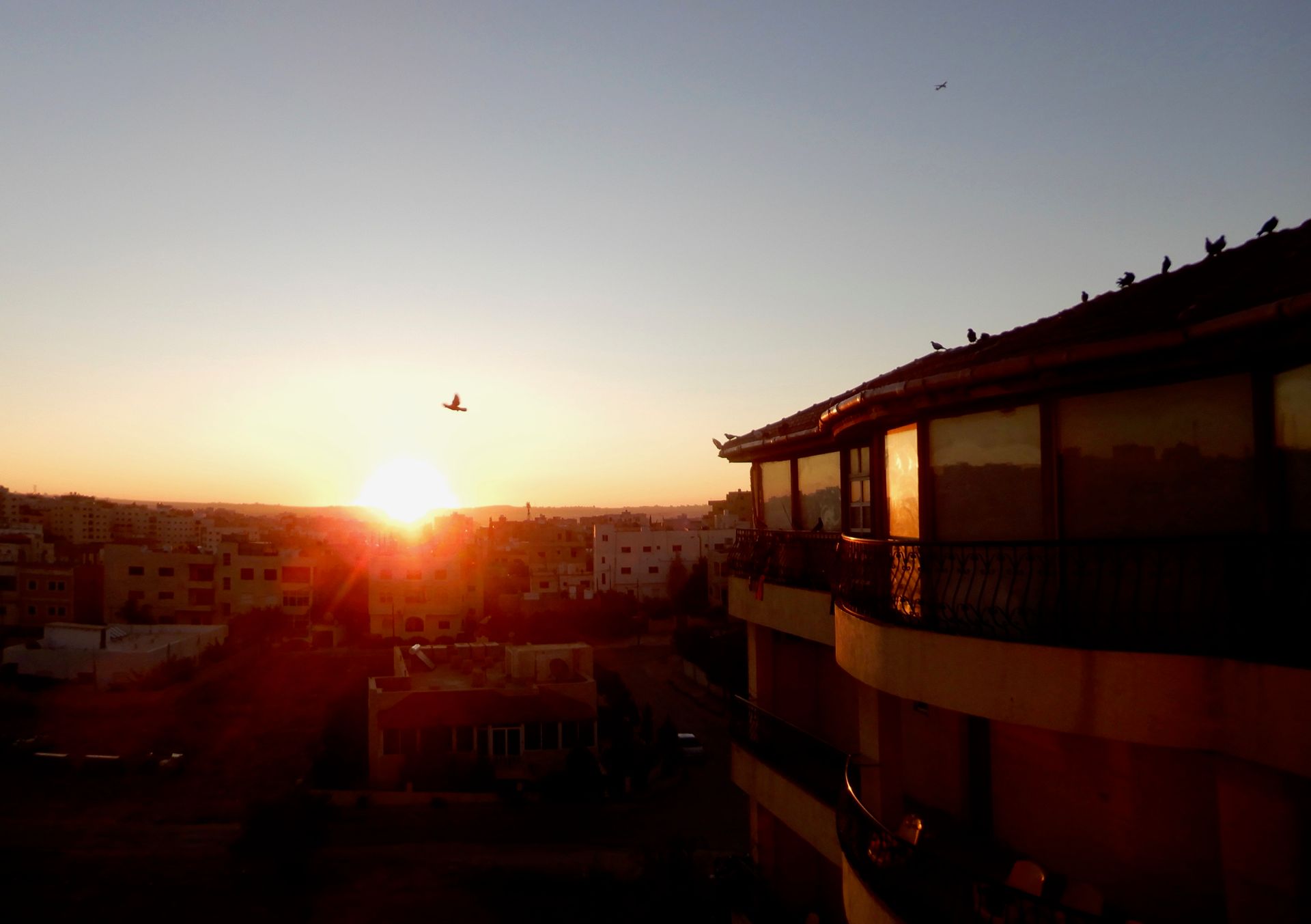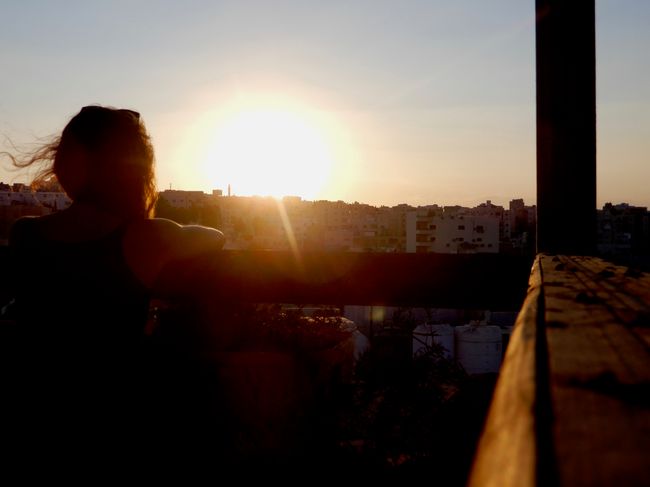Golan day no. 2
የታተመ: 25.02.2020
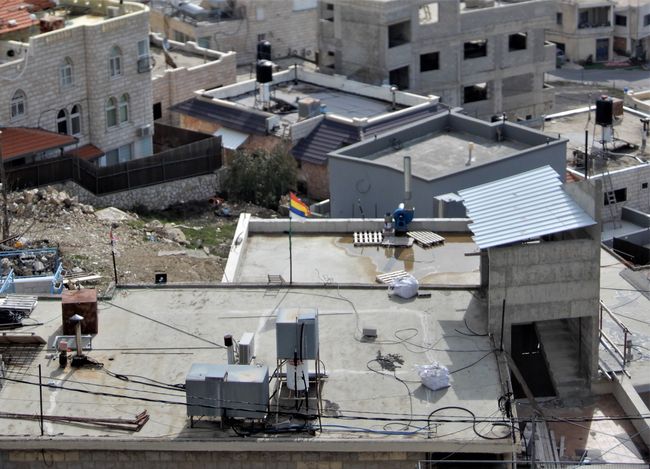
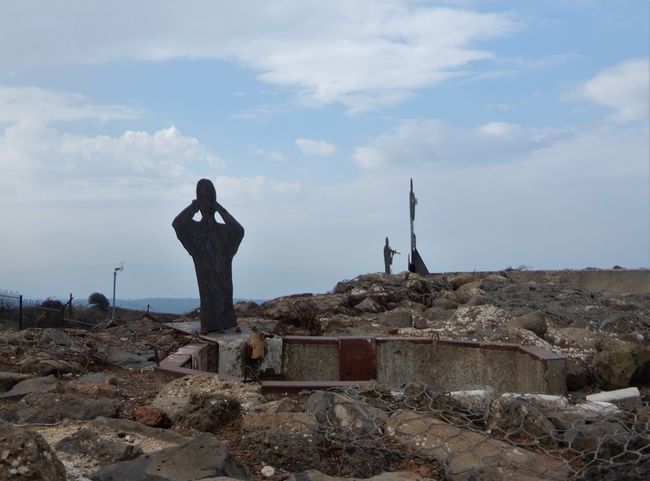
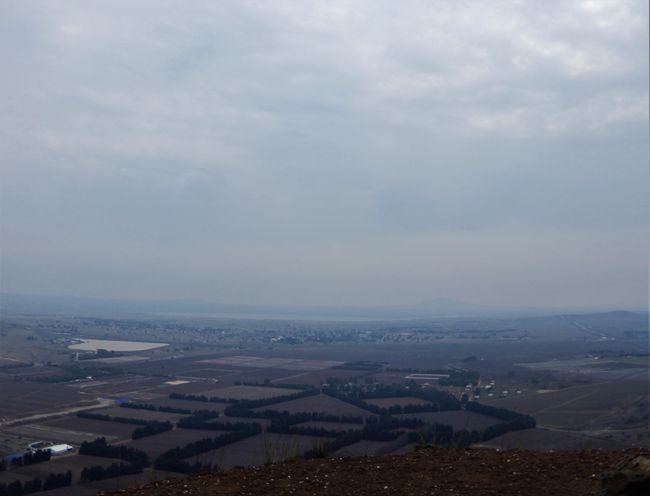
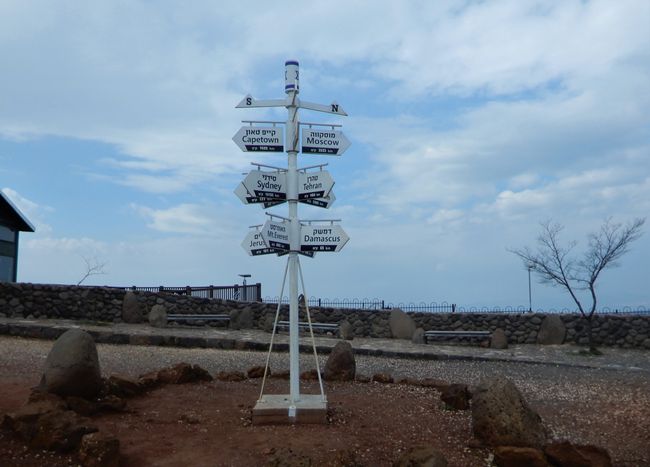
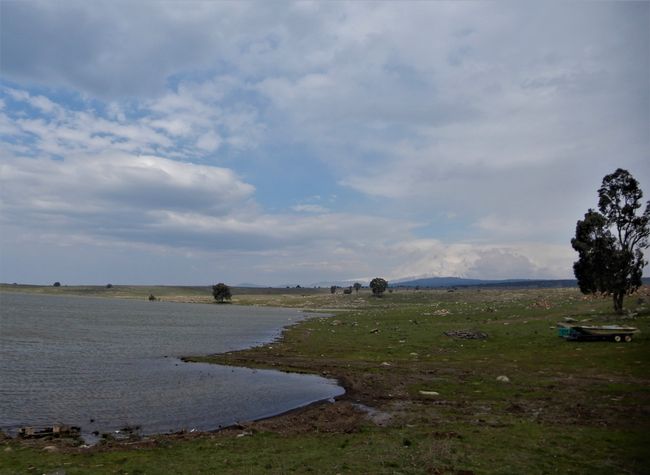
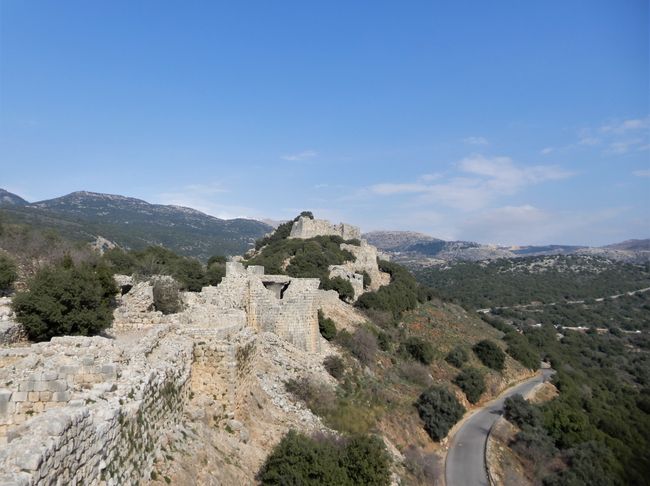
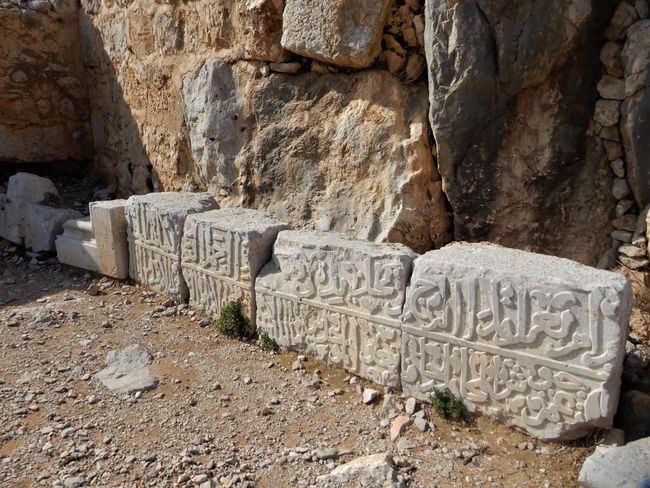
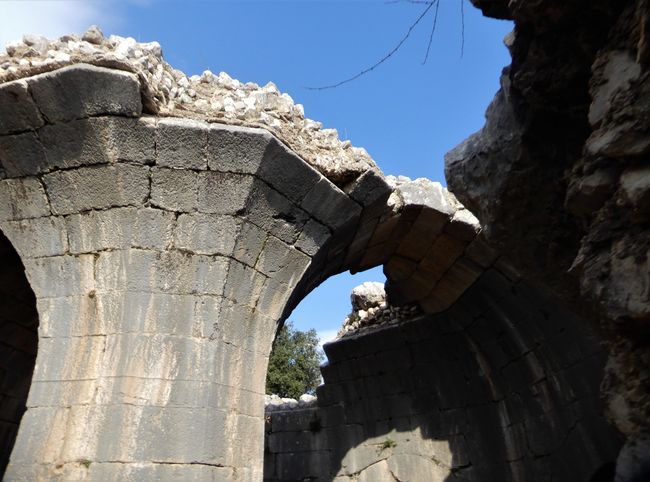
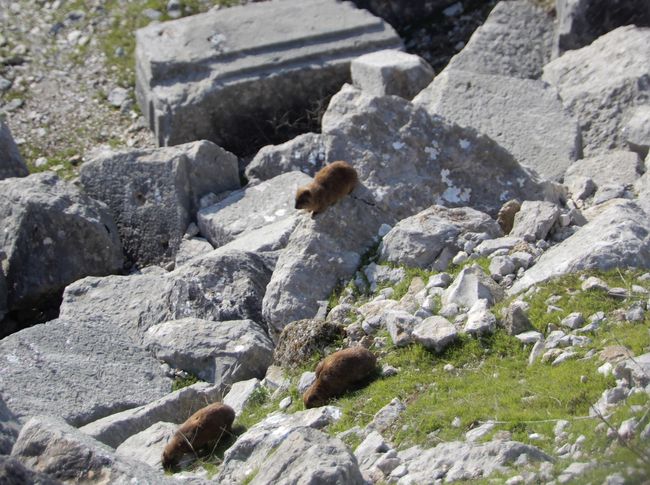
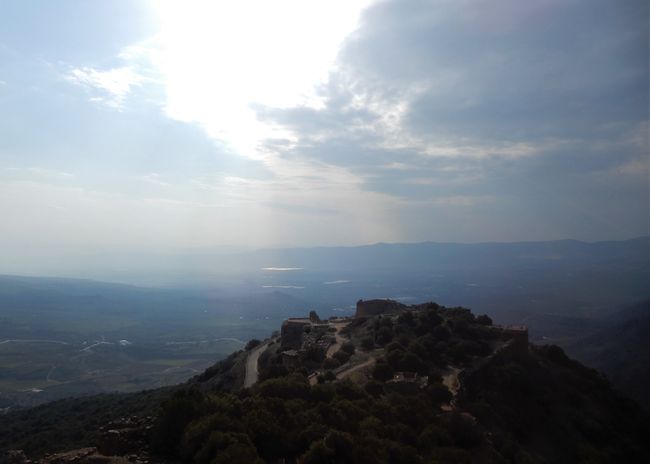
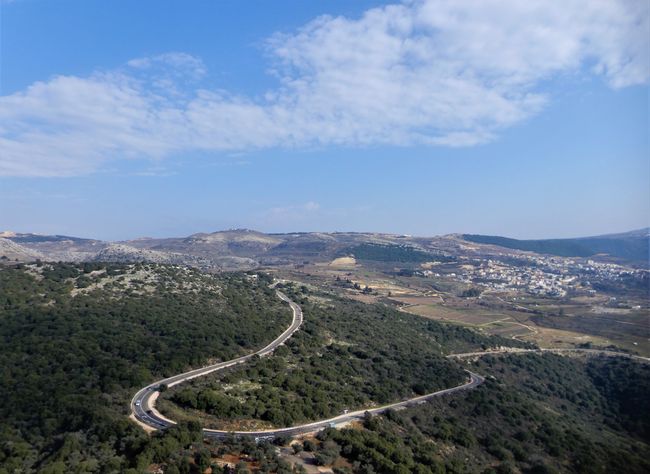
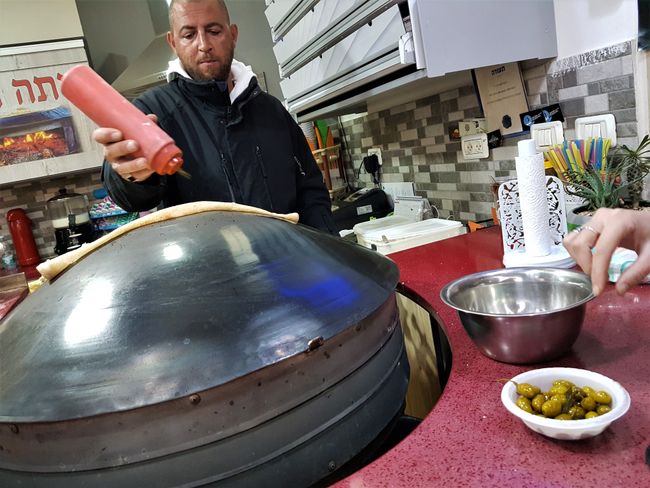
9 am. Today Busher offers to show us around a bit, which we gratefully accept. In a tension-filled area like this, it definitely makes sense to be with someone who knows their way around a bit better. We drive out of Majdal Shams and through the neighboring Druze villages. There are still five of these Arab villages from before the occupation here. Or four - in one village, Druze people accepted Israeli citizenship at the beginning of the Israeli occupation, so they are no longer considered an Arab village by the rest of the Druze community. Originally, there were over 200 Arab villages. They have all been completely destroyed by now. You can still see a few isolated old houses. Some are empty, some have been converted into Israeli military camps, some are riddled with bullets. All other remnants are now underground.
However, the fact that the Druze villages "survived" is no coincidence, but calculated, as Busher tells us. The Israeli government wanted to deliberately keep all Druze and Christians here to separate them from Muslim society. However, the plan did not consider that these are independent people and not brainless objects. Only a minority of the people here has accepted Israeli citizenship. All others chose to live stateless instead.
But it was about more than that. Apart from geographical separation and residency status, unequal treatment starts in childhood. There are different curricula for the children here, as Busher now tells us. The schools are divided by religion, different content is taught everywhere - that means a Druze child learns different content in history class than a Christian child, for example. It is, of course, difficult to estimate to what extent this unequal treatment is actually enforced, but just the thought that it is practiced at least to some extent and deliberately makes me really shudder.
Of course, there are more than just five Druze villages here in the Golan Heights. They are settlements. They are easily recognizable as always different from the Arab villages. Shielded by a guarded barbed wire fence, they look as if they were built into small patches of forest. Settlers here typically have a large estate with a garden, Busher tells us. The Druze villages, on the other hand, are not allowed to be expanded beyond the existing territory, so everything accumulates there in a very limited space. It feels a bit like he's explaining a script for a movie to us.
Our path now leads us up to a mountain from where you can see all the way to Syria. And not only that. There is a bunker there and an enclosed area surrounded by walls, from which soldiers fired down during the Arab-Israeli war. When war broke out in Syria in 2011, you could observe the rain of rockets from here. The lake and the village that can be seen on the Syrian side now look strangely peaceful. In an Israeli café up here, you can now buy "local" souvenirs. The absurdity of this place is really hard to describe.
We drive down the mountain again and stop at a small lake. A beautiful place for camping in the summer, Busher tells us. And that is not hard to imagine when you look at this idyll. Yes, it is very beautiful here, he says. That's why the Druze just wanted to have their peace here. That's it. As we get back in the car, two trucks pass us, carrying two huge tanks on their loading platforms. Like in a movie, we tell Busher, but he doesn't understand what we mean. He doesn't seem to have seen the tanks at all. Or he doesn't consider them a noteworthy sight.
Our next stop is at Busher's Farm. He still maintains a few orchards here. Recently, it has happened several times that the lock on his gate was broken here. Judging from the tracks, a livestock farmer has allowed his cows to graze on Busher's farm. Probably one of the "weekend cowboys," as he calls the settlers here. He has now borrowed a camera from a friend that he wants to hide somewhere here. It's really sad that almost no one seems to be able to do without a surveillance camera in the settled areas.
We now drive back to Majdal Shams, where Busher takes us to a small local sandwich shop, where fresh bread filled with hummus, zaatar, and olive oil is made on a special bread stone. They also serve fresh olives from the region. I have rarely eaten such a delicious sandwich. We now say goodbye to Busher and go out on our own again.
There is really a lot to see in terms of nature and viewpoints in the Golan Heights. We decide to start with Nimrod's Fortress, which is still very well preserved and looks really beautiful in the bright sunshine. In addition, from up there you have a wonderful view of the entire surrounding area. Unfortunately, we are unable to find the Banias Waterfall, which we still want to see, but generally exploring the area by car is not a waste of time at all.
So we drive back to Majdal Shams in the evening and can't resist going to the sandwich shop from this morning again. A sandwich is a good breakfast and a good dinner. As we enjoy the filled flatbread, we start chatting with the older owner of the shop, who runs the business here together with his wife and son.
He wants to know if we have ever been to Damascus. That is the most beautiful city of all, he says. It turns out that he is from Syria and his family was separated by the Arab-Israeli war and the subsequent occupation of the Golan Heights. A large part of the family still lives in Damascus. He shares this fate with so many other people here in the Golan Heights.
However, the Israeli occupation of the Golan Heights not only means that the families live formally in two different countries, but also that they can no longer see each other, even if they are only a few kilometers apart. As most other Druze, he did not accept Israeli citizenship at the time and therefore only has a kind of tolerated status. This means he is neither allowed to enter Israeli territory nor cross the border into Syria. "The other side," as he calls Syria, is so close but still unreachable for him and his family. He says they are treated worse than cattle here. And the Israeli occupiers on the other side have even less morality than animals. A lion only kills when it is hungry and wants to eat, he explains. The occupiers, on the other hand, always want to gain more territory, no matter the cost.
Despite all the pain and frustration that is evident in his language, there is still no hatred towards individual people or groups. He doesn't understand why everyone is always fighting each other because of religion, skin color, or any other discriminatory reason. They could all just live together in peace. As if he had planned it, a group of young Israeli soldiers comes into his shop, all wearing their weapons around their necks and now order a sandwich. What can you do, we ask him, when there is peace in the shop again. He shrugs. Talk, he says. Talk to each other.It is now dark and it is time to leave. Carefully we maneuver down the road past the potholes from the Golan Heights to the town of Tiberias on the Sea of Galilee, where we end the evening with a beer on the rooftop terrace of our hostel. These were two very intense and demanding days.
መልስ
